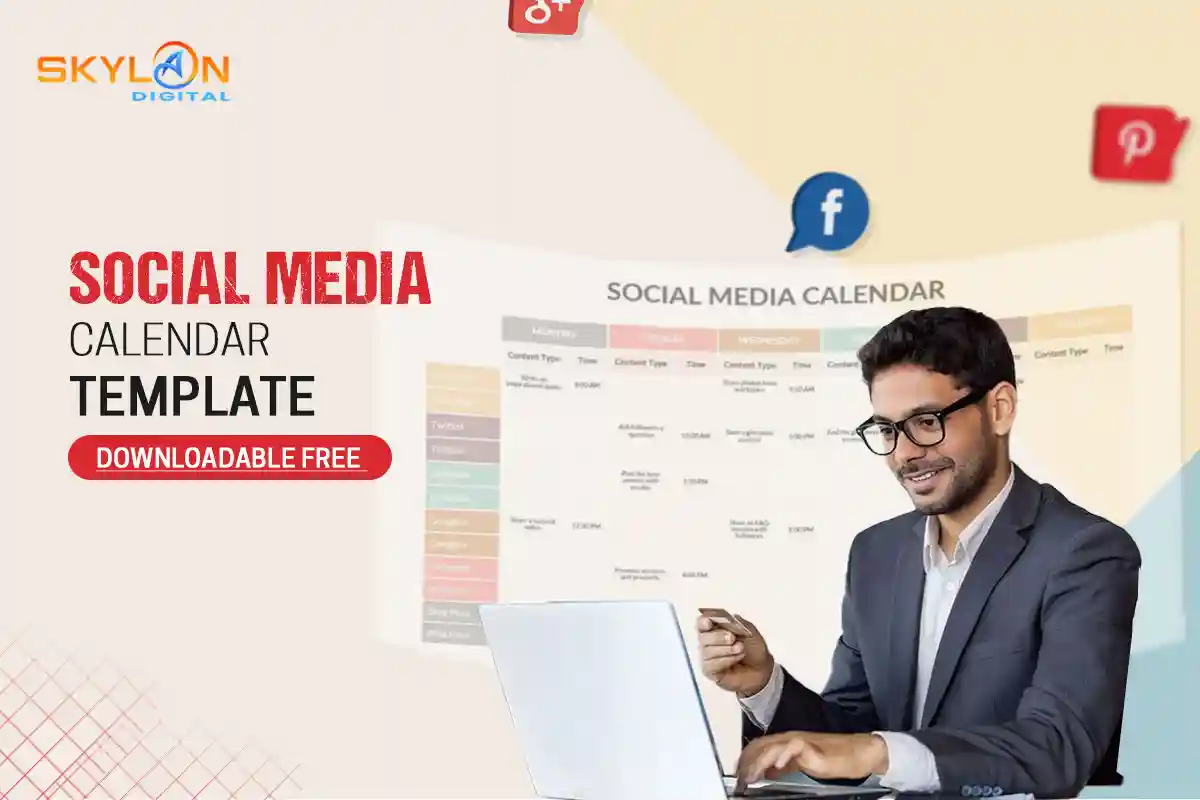
Managing multiple social media Calendar Template without a structured plan often leads to inconsistency, missed opportunities, and rushed content. Whether you’re a business owner, a marketer, a content creator, or someone managing a personal brand, having a clear roadmap can make a significant difference. A social media calendar helps you stay on track, post consistently, and focus on your goals. In this blog, we’ll walk you through the importance of a social media calendar, how to build one, and offer you a free downloadable template to help get you started.
What Is a Social Media Calendar?
A social media calendar is a visual or digital tool used to schedule your upcoming social media posts. It outlines what content to post, when, and on which platforms. Most calendars include post dates, content descriptions, images, hashtags, call-to-actions, and other relevant information.
By planning your posts ahead of time, you eliminate the stress of daily decision-making. A well-maintained calendar also makes it easier to coordinate campaigns, track performance, and ensure your content aligns with broader marketing goals.
Why Use a Social Media Calendar?
Planning content may feel time-consuming at first, but it saves a lot of time and stress in the long run. When you’re managing multiple platforms each with different types of content it’s easy to get overwhelmed. A calendar brings structure and consistency.
It helps you visualize your content strategy across weeks or months. You can easily spot content gaps, avoid repetition, and align posts with marketing events, holidays, or product launches. Teams also benefit by improving communication and minimizing last-minute chaos.
Key Benefits of a Social Media Calendar
A social media calendar does more than keep you organized it enhances your entire content strategy.
Organization and Structure
Instead of juggling ideas or losing track of posts, a calendar allows you to organize everything in one place. It keeps your process focused and makes sure nothing slips through the cracks.
Content Consistency
Posting regularly builds trust and engagement with your audience. A calendar makes it easy to stick to a consistent schedule, which is essential for algorithm performance and audience retention.
Better Collaboration
If you’re working with a team writers, designers, or clients a calendar ensures everyone knows what’s coming and who is responsible for each task. It also allows space for feedback and approvals.
Time and Resource Efficiency
Batch-scheduling content for the week or month reduces daily workload. It frees up time for community engagement, performance analysis, and strategic adjustments.
What to Include in a Social Media Calendar
Your calendar doesn’t need to be complex, but it should cover the essentials. Here are common elements to include:
- Date and time of publication
- Social media platform (e.g., Instagram, Facebook, LinkedIn)
- Caption or content copy
- Media or image links
- Hashtags to include
- Content type (story, reel, post, etc.)
- Call-to-action (CTA)
- Campaign name or theme
- Assigned team member
- Status (draft, scheduled, published)
You can adjust these based on your specific needs or team workflow.
Choosing the Right Format
Social media calendars can take various forms, depending on your workflow and the size of your team.
Spreadsheet (Excel or Google Sheets)
This is one of the most common and customizable formats. Spreadsheets are great for small teams or individuals. You can create separate tabs for each platform, week, or month.
Calendar App (Google Calendar)
If you prefer visual planning, using a calendar app like Google Calendar or Outlook lets you set reminders and view all your content alongside your personal or business schedule.
Project Management Tools (Trello, Notion, Asana)
These tools are ideal for collaboration. They allow you to assign tasks, attach files, and maintain a content pipeline. They’re particularly helpful when working remotely or managing client content.
Social Media Scheduling Tools
Platforms like Buffer, Hootsuite, and Later offer built-in content calendars. They allow you to schedule and auto-publish posts directly to multiple platforms, often with drag-and-drop interfaces.
How to Create a Social Media Calendar: Step-by-Step
Now that you understand the benefits and formats, let’s look at how to actually build your calendar.
Step 1: Define Your Goals
Start by identifying what you want to achieve. Are you looking to drive traffic to your website, increase followers, boost engagement, or generate leads? Your goals will shape the type of content you plan.
Step 2: Choose Your Platforms
Don’t try to be everywhere. Focus on the platforms where your target audience is most active. This could include Instagram, Facebook, LinkedIn, X (Twitter), YouTube, or Pinterest.
Step 3: Identify Content Types
Use a mix of content formats to keep your audience engaged. These could include:
- Educational posts
- How-to guides
- Product highlights
- Customer testimonials
- Behind-the-scenes content
- User-generated content
- Promotions and sales
Creating content categories makes it easier to plan and ensures your feed stays varied.
Step 4: Decide Posting Frequency
How often you post depends on the platform and your capacity. Here are some general guidelines:
- Instagram: 3–5 times per week
- LinkedIn: 2–3 times per week
- Facebook: 3–4 times per week
- Twitter/X: Daily
- Pinterest: Multiple times per day (if applicable)
Start small, then increase as you become more consistent.
Step 5: Build or Download Your Calendar
You can create a calendar from scratch or download our free template at the end of this blog. The template includes essential columns for date, platform, post type, caption, media, and status.
Customize it to match your workflow and branding.
Step 6: Fill in Your Content for the Month
Use your calendar to plan posts 2–4 weeks in advance. Add important dates like holidays, product launches, events, or campaigns. Use recurring content themes like “Motivation Monday” or “Feature Friday” to make planning easier.
Step 7: Review and Schedule
Once your calendar is filled, review it for balance, timing, and tone. Then use a scheduling tool to automate your posts. This saves time and ensures content is published even when you’re unavailable.
Free Social Media Calendar Template (Download Included)
We’ve created a simple and customizable free social media calendar template in Google Sheets format. You can also download it as an Excel file or import it into tools like Notion or Trello.
What’s Included:
- Monthly calendar view
- Sample entries
- Content category columns
- Platform selector
- Space for media links and notes
[Click here to download the free template] (Insert actual download link or lead capture form here)
You can make a copy for personal use and tailor it to your brand or business.
Tips to Make the Most of Your Calendar
Even with the best template, how you use your calendar matters. Here are a few best practices:
- Set aside time each week or month for planning and review
- Track performance metrics and adjust based on what works
- Leave room for spontaneous or trending content
- Maintain a content idea bank in a separate tab
- Regularly audit past posts to avoid repetition
- Coordinate with your sales or marketing calendar
Final Thoughts
A social media calendar is one of the simplest yet most powerful tools for managing your digital presence. It helps you post with purpose, save time, and remain consistent in a fast-moving online world.Whether you’re managing one brand or multiple clients, having a clear plan and workflow keeps your efforts strategic and stress-free. Download the free calendar today and start building a content system that grows with your goals.






